The animal kingdom is full of fascinating creatures with incredible abilities, but some have taken their skills to a whole new level by using what can only be described as mind control to trap their prey. These animals don’t just chase or ambush their meals; they manipulate the minds and behaviors of other creatures to turn them into willing victims. Let’s dive into the strange and captivating world of these 15 mind-controlling creatures.
1. The Parasitic Mastermind: The Emerald Cockroach Wasp
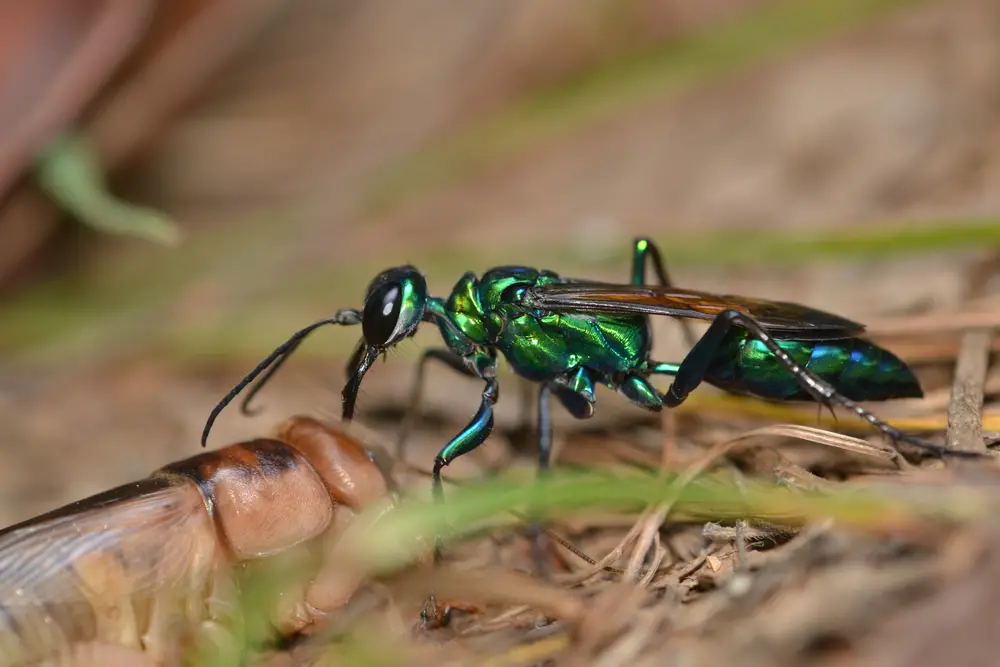
Ever heard of a wasp that turns cockroaches into zombies? The emerald cockroach wasp is a master of mind control. It injects its venom directly into a cockroach’s brain, effectively hijacking its nervous system. After this venomous sting, the cockroach loses its ability to escape and instead becomes a docile servant. According to National Geographic, the wasp then leads its new zombie companion to a burrow, lays eggs on it, and seals it inside. Over time, the wasp larvae hatch and feed on the still-living cockroach, completing this macabre life cycle. It’s like a scene straight out of a horror movie, but it’s all just another day in the life of the emerald cockroach wasp.
Cockroaches, known for their survival skills, stand no chance against this wasp’s mind-bending tactics. This predator-prey relationship highlights the wasp’s evolutionary adaptations that give it such control over its victim. The venom specifically targets the escape response of the cockroach, making the process incredibly efficient. For the cockroach, the ordeal isn’t just a physical invasion but a total mental takeover. It’s a chilling reminder of just how cunning some creatures can be. Imagine being turned into a vessel for someone else’s young—it’s as unsettling as it is fascinating.
2. The Puppeteer of the Sea: The Tongue-Eating Louse
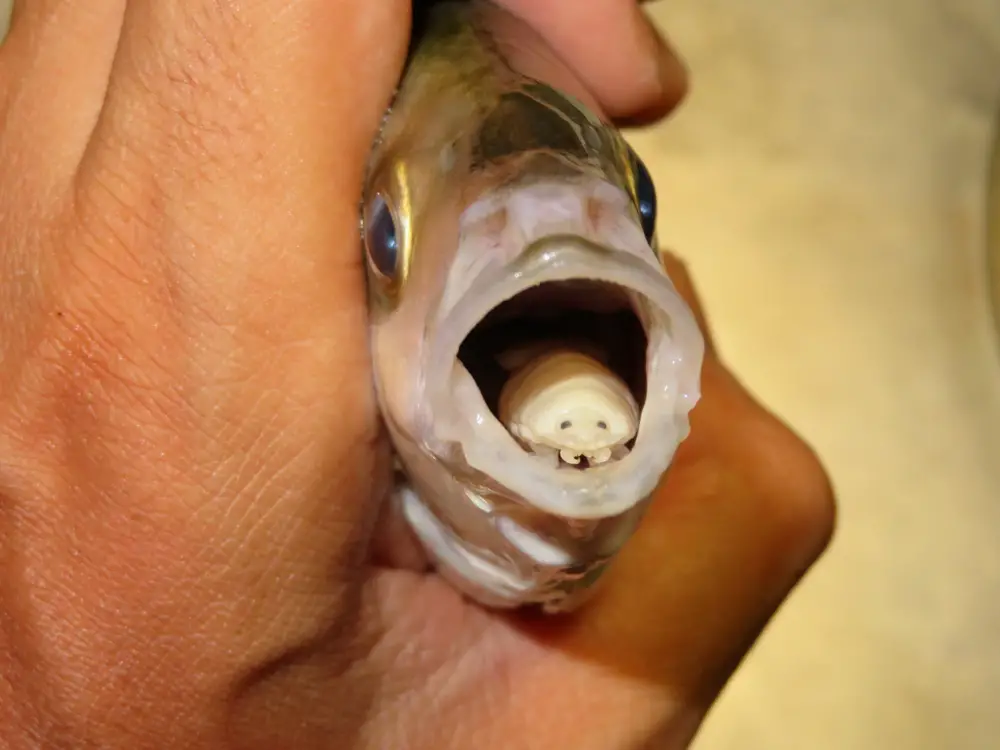
The name “tongue-eating louse” might sound like a creature from a nightmare, and its behavior is equally horrifying. This parasite targets fish, entering through the gills and attaching itself to the fish’s tongue. Over time, it drains blood from the organ until the tongue atrophies and falls off. But the louse doesn’t stop there—as reported by National Geographic, it latches onto the remaining stub and acts as a replacement tongue. This bizarre arrangement continues as the fish uses the louse to help capture and process food, a grim partnership born from parasitic manipulation.
In this twisted relationship, the louse essentially becomes part of the fish’s anatomy. The fish, now a host, is forced to accept this new reality, continuing its routine as if nothing happened. For the tongue-eating louse, this is the ultimate form of control, turning a living organism into both a habitat and a feeding ground. The horror lies in the louse’s ability to seamlessly integrate into the fish’s life. Yet, there’s an element of awe at how evolution has crafted such a specialized form of survival, blurring the lines between host and parasite.
3. The Fungal Hypnotist: Ophiocordyceps Unilateralis
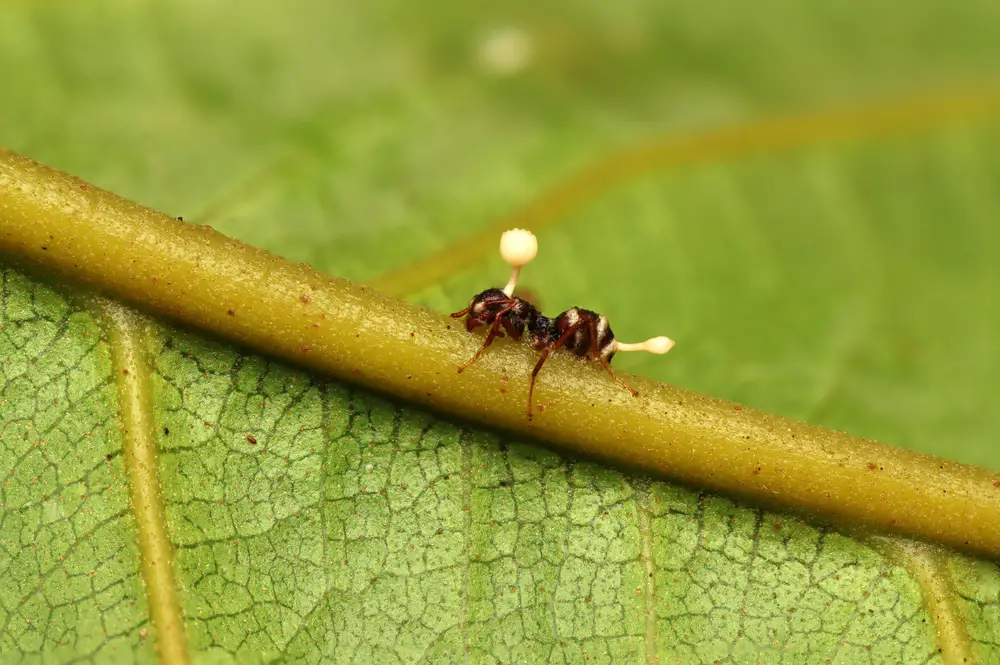
Fans of zombie lore might find a fungal twist with the Ophiocordyceps unilateralis, a parasitic fungus that turns ants into its unwitting servants. Once infected, the ant is compelled to abandon its colony and climb to a specific height before biting down on a leaf. This “death grip” is crucial for the fungus, which then grows a stalk through the ant’s head to release spores. The spores rain down on the forest floor, ready to infect more ants, perpetuating the cycle of control and death.
For the ant, it’s as if its free will is stripped away, leaving it as nothing more than a vehicle for the fungus. The fungus expertly manipulates the ant’s central nervous system, guiding it to the optimal environment for fungal growth. While eerily reminiscent of sci-fi scenarios, this is a real-world example of behavioral manipulation. What’s truly unsettling is the precision with which the fungus orchestrates the ant’s final journey. It showcases nature’s dark side, where survival often means exploiting another’s life entirely.
4. The Brainwashing Parasite: Toxoplasma Gondii
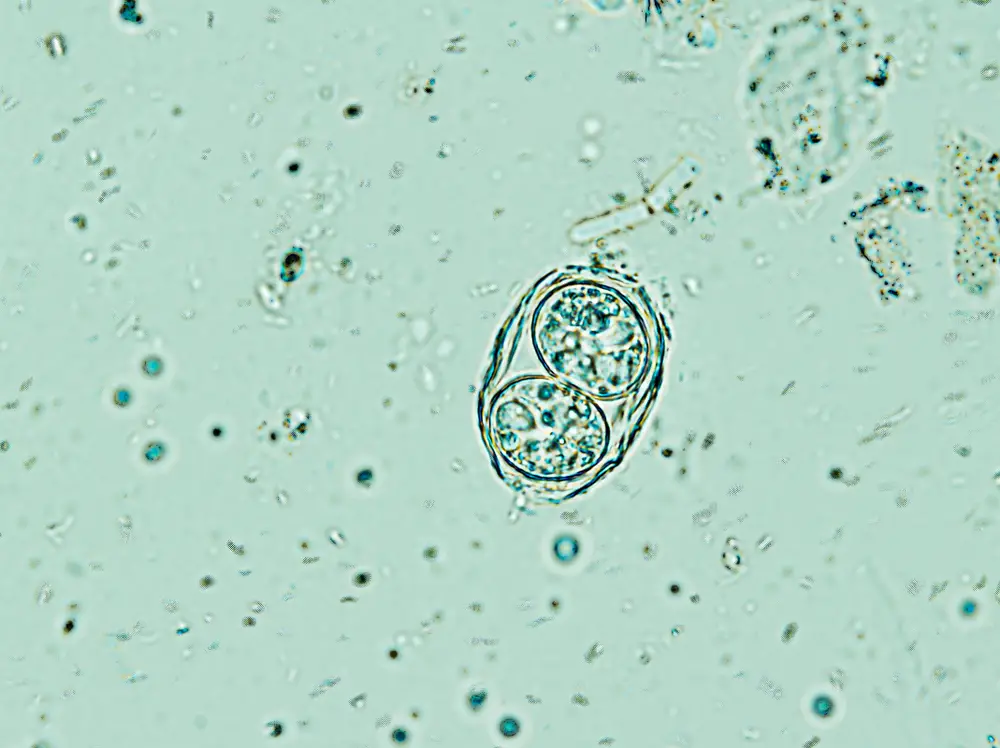
Toxoplasma gondii is a parasite with a remarkable ability to alter host behavior, best known for its influence on rodents. Once inside a rodent, it performs a mind trick that removes their natural fear of cats. This fearless behavior makes the rodent more likely to be caught and eaten by a cat, which is exactly what the parasite wants. Cats are the only hosts in which T. gondii can sexually reproduce, so getting into a feline is the ultimate goal. It’s a brilliant, albeit sinister, strategy that changes the rules of natural selection.
This tiny parasite doesn’t stop at rodents; it can infect any warm-blooded animal, including humans. While its effects on human behavior are less clear, studies have shown possible links to changes in personality and increased risk-taking. This mind-altering microorganism demonstrates how even the smallest creatures can wield immense power over others. The ability of T. gondii to manipulate behavior is a testament to the complex interplay between parasites and hosts. It’s a microscopic puppet master playing a grand game of chess, with cats and rodents as its pieces.
5. The Sneaky Spider: The Orb-Weaving Spider’s Parasitoid
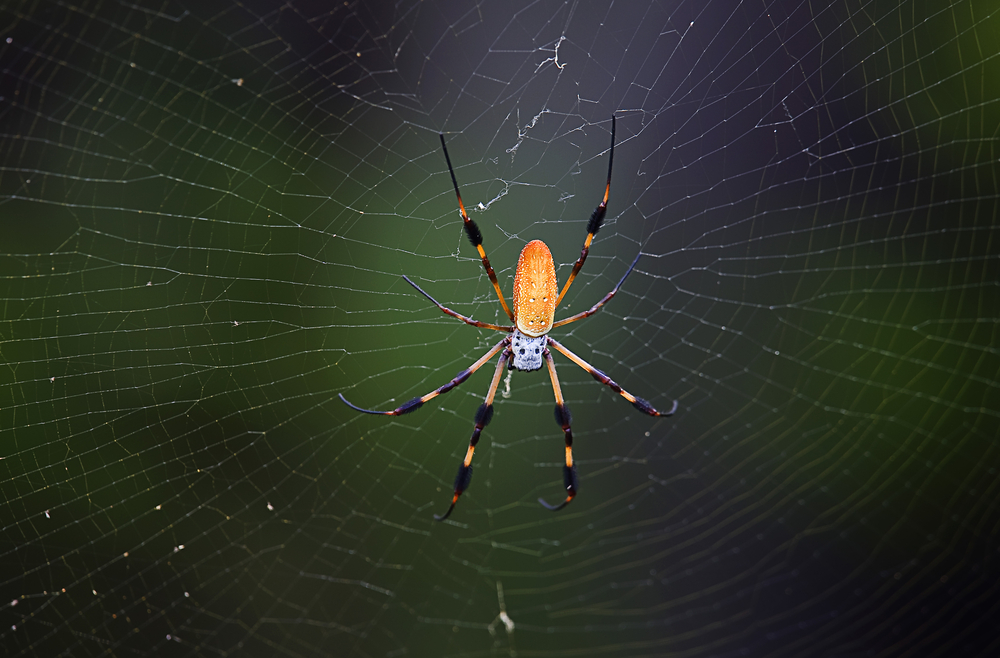
Life as an orb-weaving spider can be tough, especially when a parasitic wasp decides to turn you into its web-spinning slave. The wasp lays its egg on the spider, and as the larva grows, it injects chemicals that manipulate the spider’s web-building behavior. Instead of creating its usual intricate web, the spider constructs a simplified version. This altered web serves as a secure cocoon for the wasp larva, which eventually kills the spider before pupating safely within its custom-built shelter.
The wasp’s manipulation of the spider’s innate web-building instincts is a masterclass in behavioral control. By ensuring its larva has a safe place to grow, the wasp increases its offspring’s chances of survival. The spider, robbed of its natural behaviors, becomes an unwilling architect of its demise. It’s a haunting example of nature’s ruthlessness, where even a spider’s defining skill can be hijacked. Such interactions highlight the often-overlooked complexity and interdependence found within ecosystems.
6. The Snail Hijacker: The Leucochloridium Paradoxum
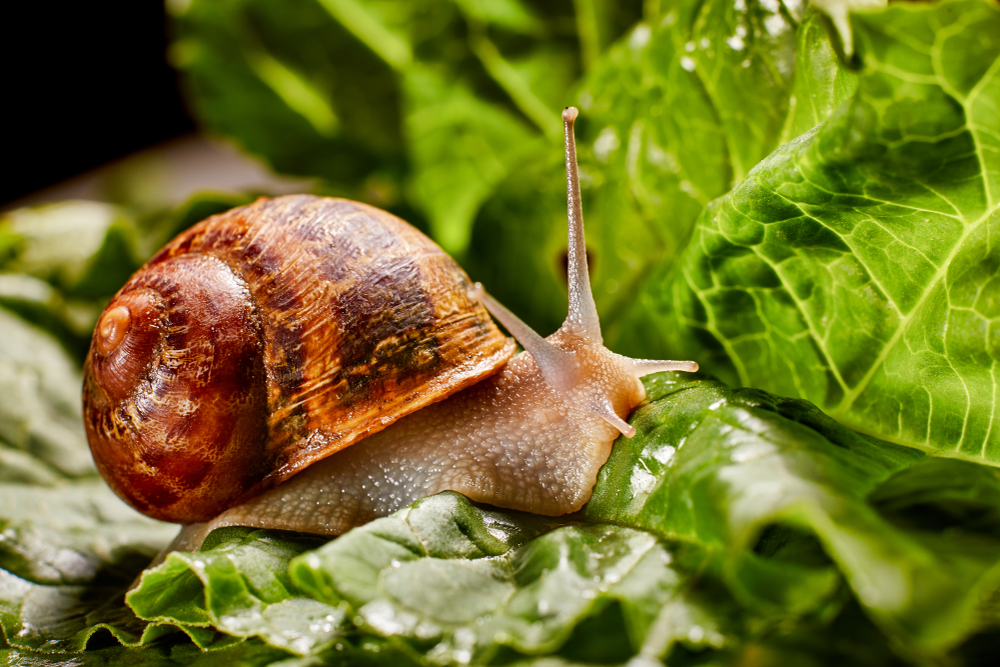
Imagine being a snail and finding yourself suddenly thrust into the spotlight, literally. The Leucochloridium paradoxum, or green-banded broodsac, is a parasitic flatworm that turns snails into unwitting performers. Once inside the snail, the parasite invades its eyestalks, causing them to swell and pulsate, mimicking the appearance of caterpillars. This bizarre transformation attracts birds, which mistake the eyestalks for food and peck at them, ingesting the parasite.
The bird serves as the final host, allowing the parasite to complete its life cycle within the bird’s digestive system. The snail, on the other hand, loses not only its eyestalks but also its autonomy, becoming a living billboard for the parasite. This grotesque method of predation showcases the lengths parasites will go to ensure their survival. The transformation is both fascinating and macabre, highlighting the complex and often cruel dynamics of nature. The snail’s plight is a stark reminder of the vulnerabilities all creatures face in the wild.
7. The Marine Manipulator: Sacculina Carcini
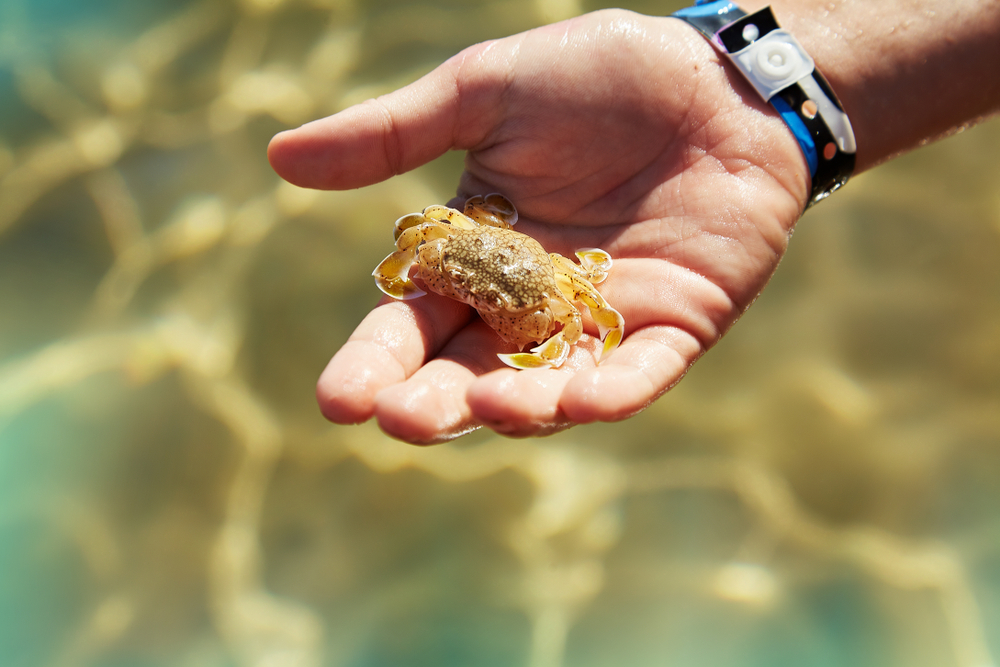
The barnacle Sacculina carcini is no ordinary crustacean; it specializes in mind-controlling crabs. It invades its host by injecting its cells into a crab, gradually taking over its body. The parasite castrates the crab, halting its reproductive abilities, and redirects its energies towards caring for the barnacle’s young. The once-independent crab now becomes a dedicated nurse to its parasitic overlords, even mimicking behaviors like egg-grooming for the barnacle’s larvae.
This parasitic takeover is so comprehensive that it affects both male and female crabs, with males even adopting female crab behaviors. The parasite’s grip is absolute, turning the crab into a vehicle for its own propagation. Sacculina carcini’s method is one of the most striking examples of parasitism in the marine world. The crab’s transformation from an active predator to a passive host serves as a cautionary tale about the power of parasitic manipulation. It’s a chilling reminder that nature’s strategies for survival can often be deeply unsettling.
8. The Mind-Altering Fungus: Entomophthora Muscae
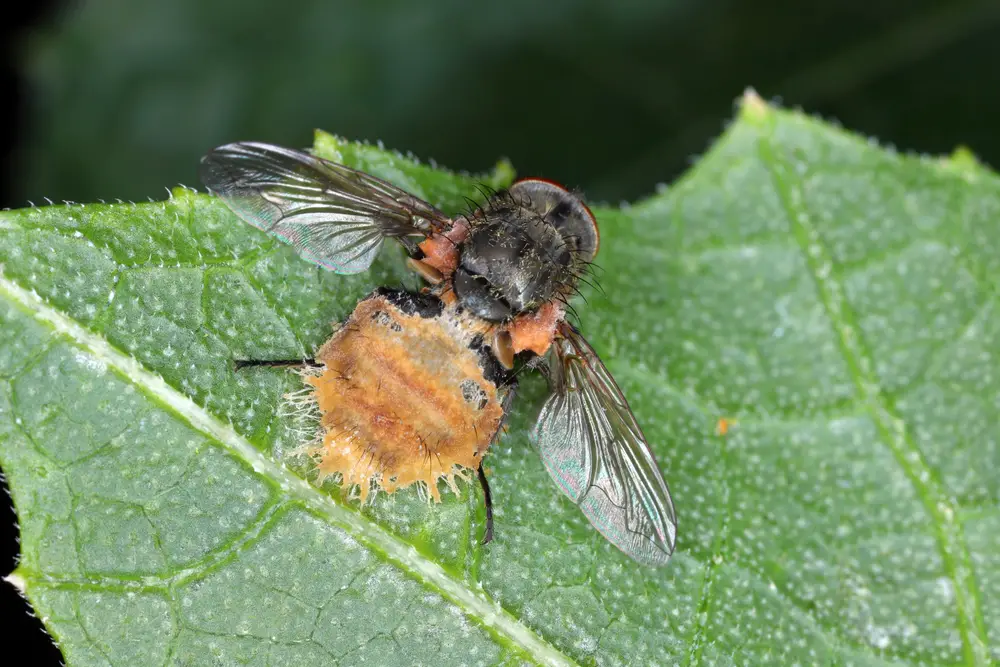
Entomophthora Muscae is a fungus that targets houseflies, turning them into its unwitting defenders. After infection, the fly climbs to a high point and spreads its wings as if it were about to take flight. Instead, it dies in this elevated position, allowing the fungus to release spores into the air to infect other flies. This fungus effectively turns the fly into a spore distribution platform, ensuring its own survival and spread.
The infected fly’s behavior is a testament to the fungus’s ability to manipulate its host’s mind. By altering the fly’s natural instincts, Entomophthora muscae ensures that its spores have the best possible chance of reaching new hosts. This behavioral hijacking is both fascinating and terrifying, as the fly unknowingly becomes a part of the fungus’s life cycle. The fungus’s strategy is a reminder of how even simple organisms can exert profound control over others, blurring the lines between predator and prey. In this microscopic drama, the fly’s demise becomes a means to an end, showcasing the complex interactions that define nature.
9. The Ant-Controlling Fungus: Myrmeconema Neotropicum

Parasites seem to have a penchant for turning ants into puppets, and Myrmeconema neotropicum is no exception. This nematode specializes in ants, causing them to mimic the appearance of ripe berries. Infected ants develop a bright red abdomen, which makes them attractive to birds. Mistaking them for fruit, birds consume the ants, and the nematode completes its life cycle within the bird’s digestive tract.
For the ant, this transformation is a fatal change, as it essentially becomes bait for birds. The nematode’s manipulation of the ant’s appearance is a clever survival strategy, ensuring the parasite can reach its final host. This process highlights the extreme lengths parasites will go to in order to propagate their species. The ant’s altered state serves as a visual deception strategy, showcasing the intricate and often deceptive strategies found in nature. The nematode’s ability to change its host so drastically is both remarkable and unnerving.
10. The Crustacean Commander: Parasitic Isopods

Parasitic isopods have mastered the art of control over their crustacean hosts, particularly fish. These parasitic creatures attach to fish, often targeting the gills or mouth. Once in place, they manipulate the host’s behavior and physiology, affecting its ability to swim and feed. The fish becomes sluggish and more susceptible to predators, inadvertently spreading the isopod to new hosts when it’s caught and eaten.
These isopods are experts in survival, using their hosts as both transport and feeding platforms. The fish’s altered behavior increases the likelihood of predation, which, although counterintuitive, aids in the isopod’s life cycle. This relationship is a perfect example of how some parasites can exert control over their host’s actions for their own benefit. The concept of a parasite that not only lives off a host but also dictates its behavior is a fascinating study in evolutionary adaptation. It’s a stark reminder that in nature, control can often mean the difference between life and death.
11. The Cicada Controller: The Fungal Parasite Massospora
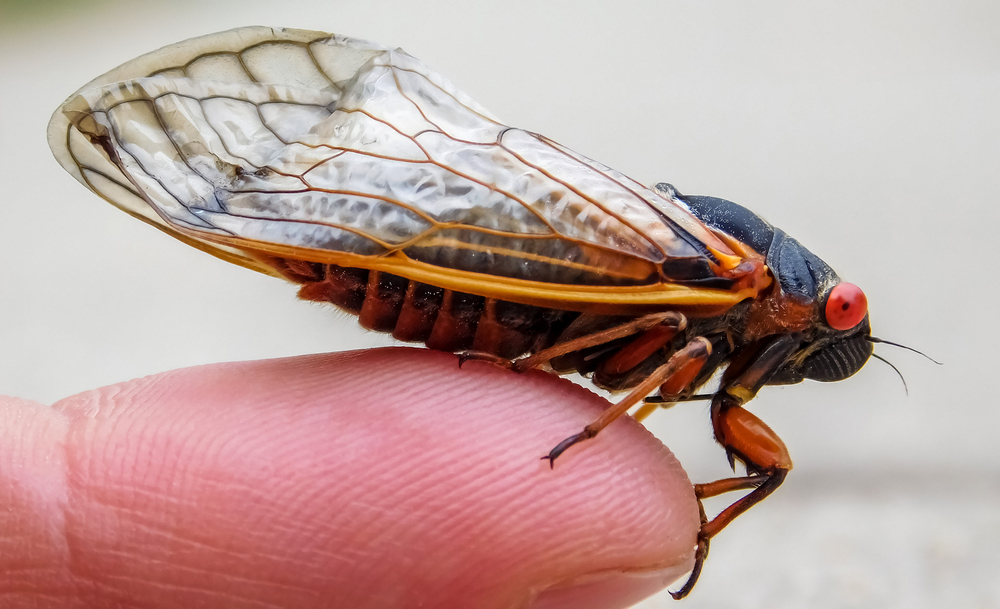
Massospora is a fungal parasite that takes over cicadas, inducing them into unusual behaviors. Once infected, cicadas become hyperactive and continue to mate despite their deteriorating bodies. The fungus causes the cicada’s abdomen to erode and be replaced with spores, which are spread to new hosts through the insect’s attempts to mate. This process turns the cicada into a vector for the fungus, spreading its spores far and wide.
The fungus’s control over the cicada’s behavior is a chilling example of nature’s ability to exploit its hosts. By driving the cicada to continue mating, Massospora ensures its spores are disseminated as widely as possible. The cicada becomes a willing participant in its own demise, a mindless distributor of the parasitic spores. This example of parasitic manipulation highlights the intricate strategies employed by fungi to propagate their species. The transformation from a living insect to a spore-spreading machine is a haunting reminder of the power of parasitism.
12. The Spider Subjugator: Zatypota Wasp
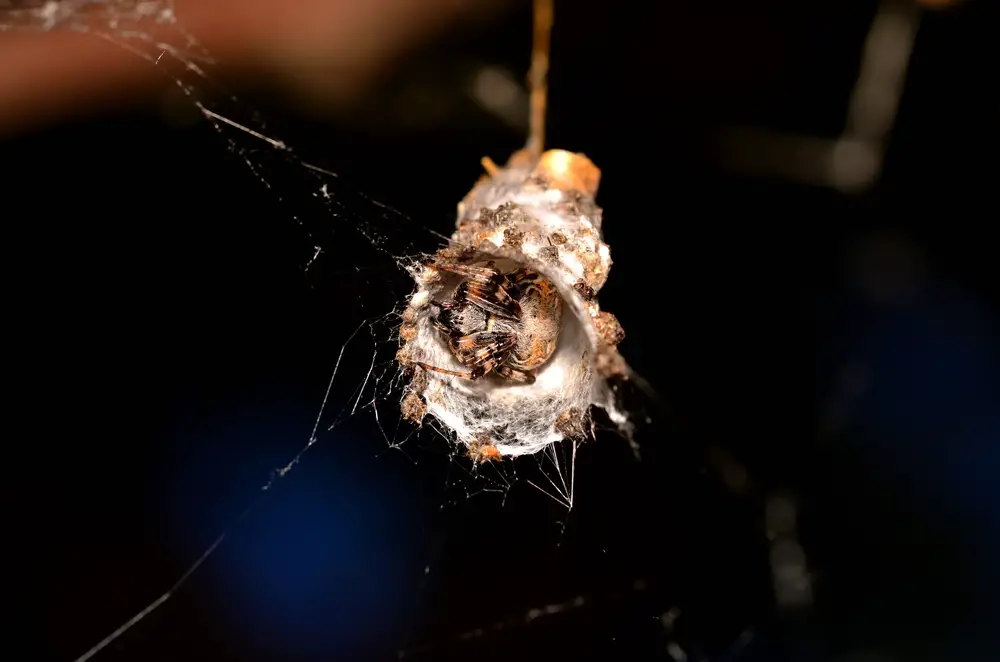
For the Zatypota wasp, spiders are not just prey but tools for its larval development. The wasp targets a specific species of spider, laying eggs on its body. As the larva grows, it releases chemicals that alter the spider’s web-building behavior. Instead of spinning the usual web design, the spider constructs a cocoon-like structure that protects the wasp larva. Once the structure is complete, the larva consumes the spider and pupates within the safety of the modified web.
This interaction highlights the wasp’s ability to manipulate a spider’s innate instincts for its own benefit. The spider, now an unwilling architect, becomes both a protector and a meal for the developing wasp. The wasp’s strategy is a testament to the complexity and cunning of parasitic relationships. The altered web serves as a secure nursery, showcasing the intersection of predation and manipulation in nature. For the spider, this encounter ends in death, but for the wasp, it is an evolutionary triumph.
13. The Fish Puppet-Master: The Anisakis Nematode
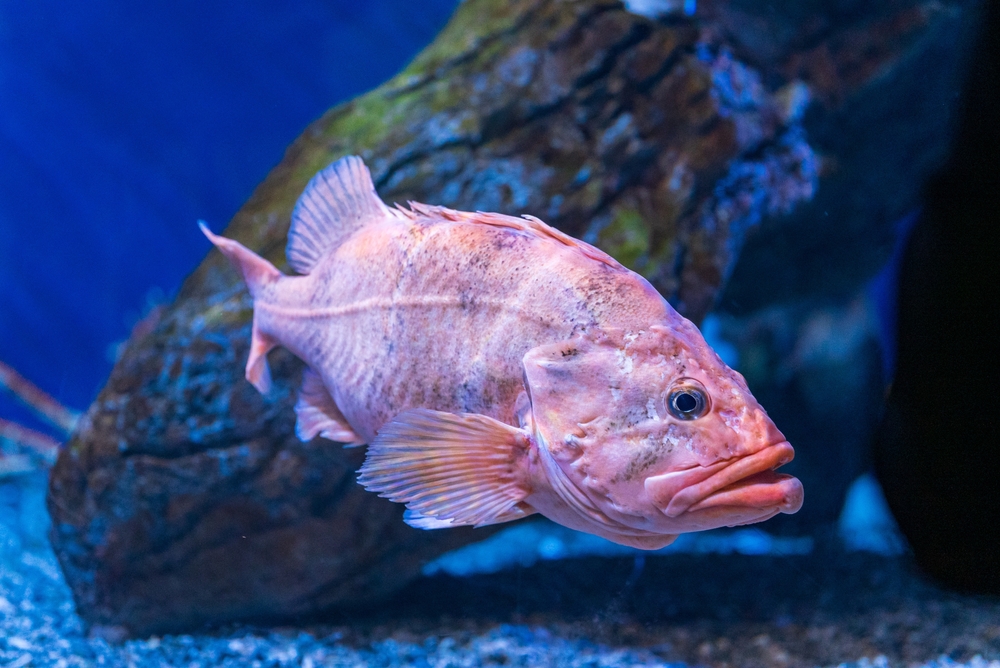
Anisakis nematodes are parasites that inhabit marine fish, manipulating their host’s behavior to facilitate their life cycle. These nematodes often reside in the fish’s gut, affecting its swimming patterns and making it more vulnerable to predators like seals and dolphins. By ensuring their host is eaten, the nematodes can reach their final hosts, where they mature and reproduce.
The influence of Anisakis on its host’s behavior is a clear example of parasitic strategy in action. By increasing the likelihood of predation, the nematodes increase their chances of survival and reproduction. This method highlights the complex relationships between predator and prey, where even a parasite can impact the dynamics. The transformation from a free-swimming fish to a parasitic vehicle demonstrates the cunning of nature’s survival tactics. It’s a stark reminder of the intricate and often harsh realities of life in the ocean.
14. The Mind-Altering Worm: The Hairworm
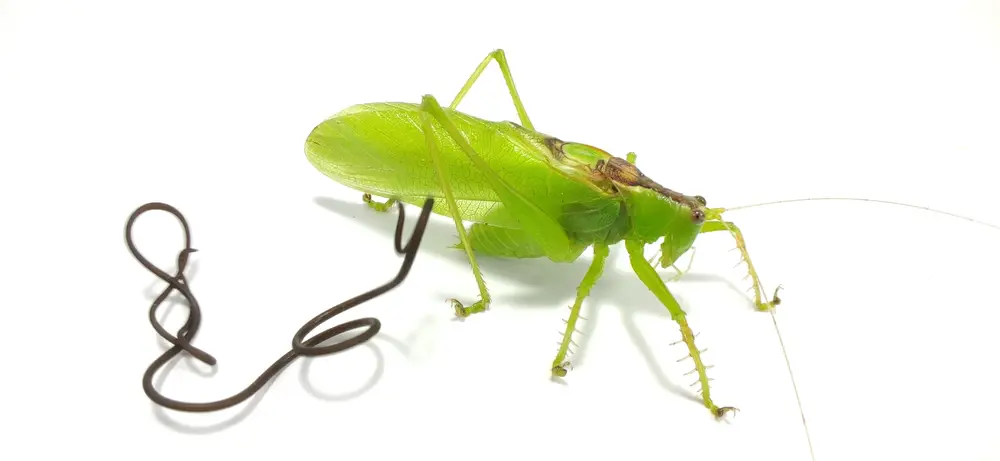
Hairworms are parasitic creatures that use an extraordinary method to complete their life cycle, targeting insects like grasshoppers and crickets. Once inside their host, hairworms grow until they can urge the insect to seek water. The infected insect, driven by the parasite’s influence, jumps into a body of water, where the mature hairworm emerges to continue its life cycle.
This drastic behavioral change is a testament to the hairworm’s manipulative prowess, essentially driving its host to suicide. The insect, unable to resist the urge, becomes a means for the parasite to reproduce, sacrificing its life for the hairworm’s continuation. This method of survival is an extreme example of how parasites can exert control over their hosts. The transformation from a terrestrial insect to an aquatic sacrifice is a chilling demonstration of parasitic influence. It showcases the lengths to which nature will go to ensure survival, even if it means commandeering another creature’s fate.
